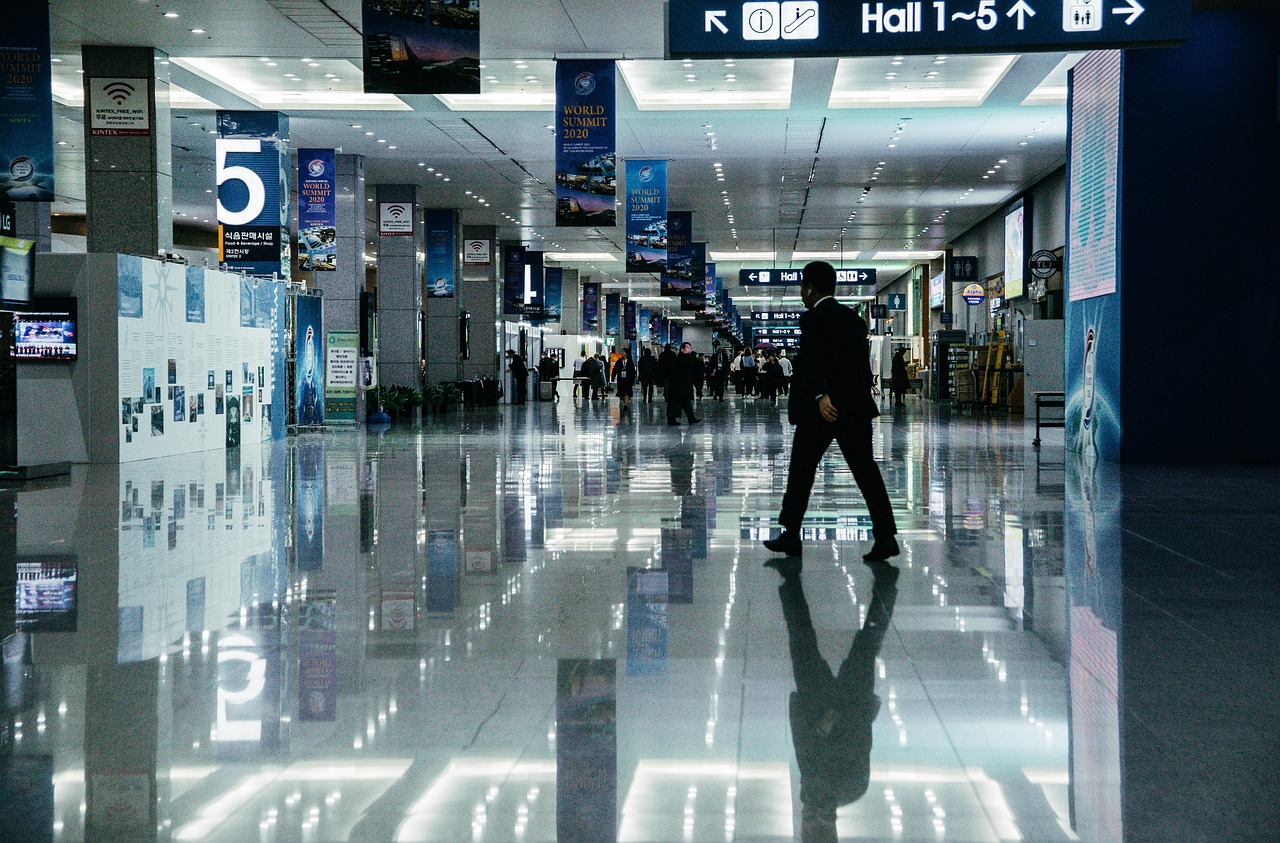
The Age of Interconnected Risk
Heading into 2026, the Middle East faces one of the most complex risk environments in recent memory. Conflicts, climate stress, and macroeconomic turbulence are not new to the region — but their interdependence has deepened dramatically. A cyberattack in Tehran, a tariff in Washington, or a drought in Lebanon can all trigger chain reactions across Gulf markets, shipping routes, food security, and national budgets.
For boards, chief risk officers (CROs), and chief internal auditors (CIAs), this convergence marks a defining test: managing not just isolated threats, but interlocking systems of risk. The role of governance and assurance has expanded from compliance oversight to strategic foresight — anticipating how geopolitical, technological, and economic forces interact to affect business continuity and public confidence.
At LAMAH Intelligent Solutions, we believe that the essential question is no longer “Where will the next crisis start?” but rather “How prepared are we to absorb, adapt, and continue operating when it does?”
That mindset — resilience through readiness — will distinguish successful organizations in 2026 and beyond.
The Middle East Risk Landscape
1. Technology, AI, and Cyber Resilience
The Middle East’s rapid digital transformation has made it a hub of innovation — and exposure. Governments are racing to deploy AI, data platforms, and automation under ambitious national visions like Saudi Arabia’s Vision 2030 and the UAE Digital Government Strategy. But while adoption is swift, governance is often trailing.
AI has become both a productivity tool and a potential weapon. Analysts forecast a 400–600% rise in AI-driven disinformation campaigns by 2026, exploiting regional divisions and manipulating narratives. Deepfakes and synthetic data can now influence markets, elections, or even public perception of brands.
For risk leaders, this blurring of digital and geopolitical risk demands a new governance discipline. Organizations should integrate AI oversight into enterprise risk frameworks, ensuring transparency, explainability, and ethical use of algorithms. Internal audit should expand coverage to assess data provenance, bias detection, and access controls for AI tools.
Scenario exercises are also vital. How would your organization respond if deepfake videos of senior leaders emerged, or if your systems were weaponized in a misinformation campaign?
Cyber risk is now geopolitical risk — and defending against it requires collaboration between boards, compliance officers, and national cyber agencies.
2. Regional Security and the Iran–Israel Flashpoint
The twelve-day Israel–Iran war in 2025 showed how quickly the regional balance can shift. Though short-lived, it brought the Middle East to the edge of a broader confrontation before a U.S.-brokered ceasefire paused hostilities. Yet none of the underlying drivers — Iran’s nuclear ambitions, its proxy networks, and Israel’s strategic posture — have disappeared. The probability of renewed confrontation in 2026 remains high. Any misstep — a missile incident, naval clash, or cyberattack — could disrupt Gulf shipping routes or energy infrastructure.
Organizations must therefore include conflict scenarios in their enterprise risk assessments. Consider the impact of oil price spikes, supply interruptions, or shipping delays through the Strait of Hormuz. Business continuity plans should define fallback logistics, alternative sourcing, and clear evacuation procedures.
Regional governments are quietly pursuing diplomacy and deconfliction, but corporate leaders must plan as if tensions could escalate without warning. Vigilance, intelligence monitoring, and adaptable response planning will remain critical to resilience.
3. The Gaza Ceasefire and the Unfinished Peace
The late-2025 ceasefire in Gaza halted two years of intense fighting and brought temporary relief to a region weary of war. Yet the truce remains fragile. Disputes over governance, reconstruction, and disarmament continue, and new violence could erupt if these issues are mishandled.
Even for companies far from the front lines, the implications are tangible. Public sentiment, social media activism, and geopolitical polarization can affect supply chains, reputations, and employee safety. In a world where perception spreads faster than fact, reputation risk is geopolitical risk.
Boards and communication teams should stress-test their response plans for politically charged events. How would your organization react if linked — accurately or not — to a controversial partner or policy? Are statements, social media, and crisis protocols aligned to reflect neutrality, empathy, and transparency?
Organizations operating in or near conflict zones should also review sanctions exposure, humanitarian obligations, and data privacy when handling personal or security-related information. The most resilient companies will be those that can maintain integrity and compassion amid volatility.
4. Socioeconomic Pressures and Public Discontent
Beneath the headlines of conflict lies a quieter but more enduring risk: economic disenchantment. Youth unemployment across the region exceeds 25%, and female labor participation remains the lowest globally. Inflation, fiscal deficits, and public debt have eroded purchasing power, while inequality has widened. This creates fertile ground for protests and political volatility. In several countries, public anger over unemployment and corruption has already erupted into unrest. For risk managers, these are early warning signals, not background noise.
Companies should monitor economic indicators like inflation rates, subsidy reforms, and social media sentiment to anticipate disruptions. Internal audit and risk functions can assess site security, crisis communication readiness, and operational exposure to civil unrest.
At a strategic level, boards should advocate for inclusive growth. Programs that create local employment, invest in youth training, or support community infrastructure are more than CSR — they are risk mitigation through social investment.
In the long run, business stability depends on societal stability.
5. Climate Change: The Threat Multiplier
Climate change is no longer a distant concern — it is a force multiplier amplifying every other risk. The Middle East, the world’s most water-scarce region, is warming twice as fast as the global average. The 2025 drought in Lebanon, which drained its largest reservoir and crippled hydropower, was a wake-up call.
Rising temperatures, shifting rainfall, and resource scarcity threaten energy grids, agriculture, and public health. For businesses, this means disrupted supply chains, higher cooling and desalination costs, and potential regulatory tightening.
Boards should treat climate risk as strategic risk. Regular stress testing for heatwaves, floods, or energy shortages should feed into continuity planning. Audit committees should verify compliance with environmental standards and review insurance coverage for extreme weather events.
The region’s wealthier states are leading investments in renewable energy and carbon capture, yet adaptation must extend beyond infrastructure to governance and data. Regional cooperation on water-sharing, disaster response, and climate finance will determine whether environmental stress becomes a driver of stability or conflict.
6. Extremism, Fragile States, and Political Volatility
While conventional wars dominate attention, the persistence of weak governance across parts of Syria, Yemen, and Libya continues to incubate extremist networks. These groups exploit chaos, misinformation, and technology to recruit or disrupt.
For multinational corporations, the risk extends beyond physical security to legal and financial exposure. A sudden regime change, sanctions reclassification, or currency collapse can immobilize assets overnight. Companies should therefore adopt country-risk early warning systems — monitoring governance indicators, compliance flags, and corruption trends.
Scenario planning for “state failure” should be standard practice, including capital repatriation triggers, staff evacuation procedures, and data backup locations.
Investors and auditors alike must recognize that political fragility can be as damaging to enterprise value as market downturns.
7. Great Power Rivalries and Energy Market Uncertainties
The Middle East is once again a stage for global power competition. The return of U.S. unilateralism, intensifying U.S.–China trade tensions, and Russia’s continued influence in Syria have made strategic neutrality harder to maintain.
Energy remains the economic backbone, yet volatility persists. Non-OPEC supply growth from the U.S. and Latin America, combined with fluctuating demand, has narrowed OPEC’s control. Forecasts suggest oil could hover near $60–70 per barrel in 2026 — sufficient but vulnerable.
Boards should monitor fiscal exposure to oil price fluctuations and test assumptions in budgets and project financing. Diversification — into renewables, logistics, technology, and services — is not merely a policy slogan; it is a resilience strategy against global commodity cycles.
Global and Cross-Regional Spillovers
1. The Global Economy: Tariffs, Taxes, and Monetary Crosswinds
Global economic policy is increasingly politicized — and the consequences reach the Gulf quickly. In 2025, new U.S. tariffs on Chinese goods disrupted global trade, prompting China’s retaliatory export curbs. OPEC+ responded by increasing oil production despite falling prices, while Gulf economies imported U.S. inflation through their dollar pegs. The result: regional liquidity tightened, import costs rose, and investment appetite cooled.
Meanwhile, large U.S. fiscal deficits and new tax plans risk weakening the dollar and sustaining inflation, forcing the Federal Reserve to keep interest rates elevated. Because Gulf currencies are pegged to the dollar, regional borrowing costs will remain sensitive to U.S. policy shifts.
Boards must therefore integrate macro spillover analysis into strategic planning. Interest rate volatility, dollar movements, and global liquidity now shape everything from real estate cycles to infrastructure financing.
CFOs and CROs should maintain liquidity buffers, diversify funding, and assess hedging effectiveness against multiple interest-rate and currency scenarios.
2. Commodity and Market Signals: Oil, Gold, and the Dollar
Commodity prices tell the story of confidence. In 2025, despite conflicts, oil prices dipped amid oversupply and weaker demand. At the same time, gold reached record highs above $4,000 per ounce — a signal of global fear. These inversions show that volatility, not direction, defines markets. A rising gold price often precedes tightening credit conditions and declining investor appetite for emerging markets.
Boards should monitor commodity signals as leading indicators of financial stress. A prolonged oil slump would challenge state budgets and sovereign investments, while surging gold prices could reflect investor flight from risk.
Resilient organizations use such indicators to adjust early — securing credit lines, rebalancing portfolios, and refining capital plans before liquidity tightens.
3. Conflict and Supply Chain Disruptions
The Middle East’s strategic geography connects Europe, Asia, and Africa — but it also exposes the region to global chokepoint risks. The Houthi attacks on Red Sea shipping in 2025 forced rerouting of vessels around Africa, delaying deliveries and raising costs. Analysts estimated that if Bab al-Mandeb were fully blocked, 20% of global oil flow would halt temporarily.
Beyond regional conflicts, external wars — such as in Ukraine or a potential India–Pakistan escalation — could further destabilize energy and food supply chains. Middle Eastern economies dependent on imported grain or fertilizer are particularly exposed to disruptions in the Black Sea corridor.
Risk leaders should ensure that supply chain mapping and redundancy are standard practice. This means identifying single points of failure, maintaining buffer inventories, and engaging insurers to quantify interruption costs. Internal audit should validate that continuity plans cover supplier insolvency, port closures, and communication blackouts.
In an interconnected world, resilience is logistics.
4. Food, Water, and Health Resilience
Over half of the Middle East’s food supply is imported. This dependence makes it vulnerable to external shocks — droughts, trade embargoes, or pandemics. The COVID-19 experience demonstrated how rapidly a global health crisis can paralyze both demand and supply: tourism halted, logistics froze, and oil prices collapsed simultaneously.
If a new pandemic or health emergency emerges, the consequences could be even broader given higher regional connectivity.
Organizations, especially in food, healthcare, and logistics, must therefore treat biosecurity and supply continuity as core enterprise risks.
This includes diversified sourcing, emergency stockpiles, and coordination mechanisms with local authorities. Boards should request annual reviews of pandemic and supply disruption readiness — not as operational drills, but as matters of fiduciary oversight.
What Risk Managers and Internal Auditors Should Do
1. Integrate Geopolitical Risk into Enterprise Frameworks
Geopolitical risk should now stand alongside credit, liquidity, and operational risk as a formal category within enterprise risk management. Boards should mandate structured scenario planning that considers war, sanctions, cyber incidents, and climate events in combination — not isolation.
The goal is not prediction but preparedness through agility: ensuring that when disruptions occur, decision-making, communication, and response mechanisms function seamlessly.
Regular tabletop exercises involving executive committees, audit, and operations teams can expose gaps before crises do.
2. Redefine Internal Audit’s Role
Internal audit can be a catalyst for resilience. Audit plans for 2026 should expand beyond traditional financial control testing to cover:
- Business continuity and crisis management readiness
- Cybersecurity and AI governance
- Sanctions and third-party compliance
- Climate and environmental risk management
- Supply chain and data resilience
Audit committees should require periodic reporting on management’s preparedness for geopolitical disruptions.
In volatile environments, assurance equals confidence — it is the foundation of board trust.
3. AI Governance and Data Integrity
As AI becomes embedded in business operations, governance must evolve in step. Boards should oversee frameworks for algorithmic transparency, ethical data usage, and accountability in automated decision-making. Compliance teams should map every AI system, the data it uses, and its regulatory implications.
Training staff to detect AI-driven misinformation or manipulation should become as standard as fraud awareness.
AI governance is no longer an IT concern — it is a strategic resilience pillar.
4. Resilience as an Organizational Culture
Resilience is not a department — it is a culture. Organizations that endured the last decade’s crises shared a common trait: readiness embedded in every function.
Modern resilience programs should link IT recovery, cybersecurity, operations, and communications under a single command structure. Regular drills, clear escalation lines, and tested data backups are vital. Boards must ensure that resilience plans are reviewed, resourced, and realistically tested.
When crises hit, agility — not hierarchy — determines survival.
5. Communication and Stakeholder Trust
In times of geopolitical tension, communication missteps can escalate risk faster than events themselves. Organizations need pre-approved communication frameworks that emphasize transparency, empathy, and accountability.
Equally important is the ability to counter misinformation. With AI-generated content blurring truth, establishing trusted communication channels — internally and externally — becomes a form of defense.
In 2026, credibility is as valuable as capital.
6. Collaboration and Public–Private Partnerships
No single institution can manage systemic risk alone. Governments, regulators, and private enterprises must collaborate on cybersecurity, crisis response, and infrastructure protection. Joint simulations, shared data platforms, and coordinated risk intelligence hubs can accelerate regional resilience.
LAMAH advocates for risk intelligence partnerships that bridge sectors and borders — transforming fragmented risk management into collective foresight.
From Risk Awareness to Strategic Agility
The events of the last few years — pandemics, wars, cyberattacks, and climate shocks — have shown that risk awareness alone is not enough. True resilience lies in strategic agility: the ability to sense, decide, and act faster than disruption unfolds.
Boards and executives must therefore align around three imperatives:
- Foresight – continuously scanning geopolitical and macroeconomic trends to anticipate shifts.
- Flexibility – designing business models and processes that can pivot when markets or supply routes change.
- Integrity – maintaining trust, ethics, and transparency even under pressure.
Agility is not improvisation; it is the product of disciplined planning, diverse thinking, and empowered decision-making.
When leadership prioritizes these values, organizations transform risk into opportunity.
Navigating the Geopolitical Decade Ahead
The Middle East stands at the crossroads of every major global transformation — energy transition, digital acceleration, demographic change, and climate stress. Each of these trends is shaped by geopolitics, and each can either strengthen or destabilize the region depending on how governments and organizations respond.
For corporate boards, internal auditors, and risk leaders, 2026 is not only a year of elevated threats, but also a year of choices — choices about governance discipline, technology oversight, diversification, and ethical leadership. The organizations that emerge stronger will be those that recognize that resilience is built before crises, not during them.
LAMAH’s work across governance, risk, and technology shows that preparedness is not about predicting the next shock — it is about creating systems that can withstand any shock. This demands integrated thinking: linking geopolitical intelligence to enterprise risk frameworks, aligning business continuity with cyber defense, and embedding social and environmental awareness into board decisions.
The region’s leaders should enter 2026 with three priorities:
- Stay informed — treat geopolitical and macroeconomic trends as strategic variables, not noise.
- Stay connected — collaborate across sectors and borders to anticipate and respond collectively.
- Stay adaptive — evolve governance and audit practices to match a world where change is constant.
The coming decade will not be risk-free — but it can be opportunity-rich for those who see foresight as their competitive edge.
At LAMAH Intelligent Solutions, we believe the future of resilience lies in integrating geopolitical insight, AI governance, and risk intelligence into one coherent strategy for sustainable leadership.
In 2026 and beyond, resilience is the new advantage — and foresight is the new governance.
=======================================================================
Disclaimer:
The views and information expressed in this article are provided for general informational and educational purposes only and do not constitute professional, legal, financial, or investment advice. LAMAH Intelligent Solutions and the author(s) make no representations or warranties as to the accuracy, completeness, or suitability of the information contained herein and accept no liability for any loss or damage arising from reliance on it. Readers are advised to seek independent professional advice before making any decisions based on this content.



